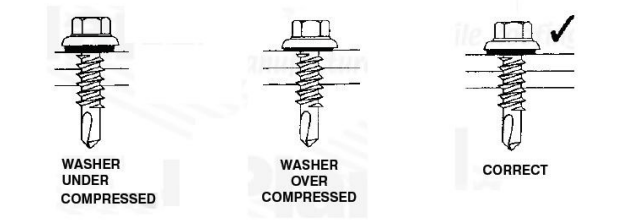Fitting Guide
Fixing our box profile sheeting is quick and easy, we advise you to overlap the drainage side of the sheet `as pictured` the groove drives any water away which is trying to get under the lap

RECOMMENDED PURLIN SPACING
The spacing between the purlins will be determined by the thickness of the sheets employed. As a rule of thumb, we advise a maximum purlin spacing of 1200mm for 0.5mm gauge sheets, whereas for 0.7mm gauge sheets, it can extend up to 1600mm and occasionally beyond, subject to conditions. Purlins should have a minimum width of 50mm to facilitate easy and swift screwing of your sheeting.
LAYING OF ROOFING SHEETS
The sheet laying process should start from the eave and progress towards the prevailing wind direction (usually from left to right). This ensures that the side laps are positioned away from the wind, preventing water from being pushed into the lap.
FIXING
The most efficient way to secure the sheets is with self-drilling tech screws. These are suitable for timber, steel purlins, and heavy sections. Typically, the sheeting is fastened in every other trough, but in exposed areas with higher wind intensity, it's advisable to fasten in every trough. Stitcher fixings are utilized for overlaps, spaced at 500mm intervals, for optimal results.


MASTIC BUTYL SEALANT
The preferred sealant for profiled steel roofing and cladding projects is Mastic Butyl strip. It's applied within the side and end laps of the roof sheet (usually not needed for wall cladding) and provides outstanding performance when compressed. Available in bead sizes of 6 x 5mm or 3 x 9mm, this sealant comes on a roll with paper backing strip, making application easy.




